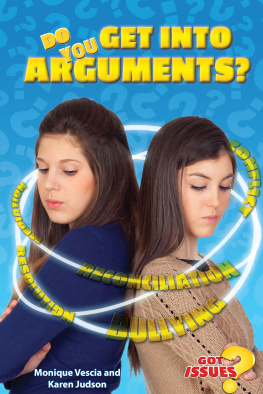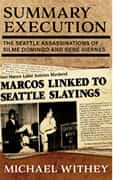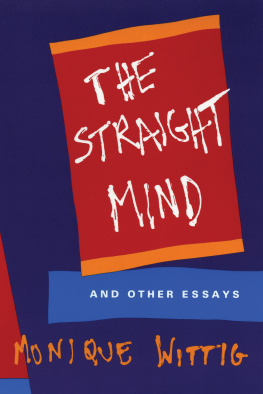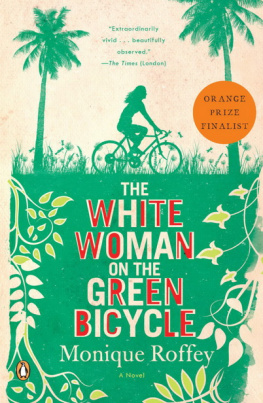AS A DOG THINKETH
Daily Words of Wisdom for Dog People
MONIQUE ANSTEE

Copyright 2017 by Monique Anstee
All rights reserved. No part of this publication may be reproduced, stored in a retrieval system, or transmitted in any form or by any means, electronic, mechanical, photocopying, recording, or otherwise, without the prior written permission of the publisher. For more information, contact the publisher at touchwoodeditions.com.
The information in this book is true and complete to the best of the authors knowledge, although it may contain errors, omissions, or inaccuracies. All recommendations in this book are made without guarantee on the part of the author or the publisher, and neither the publisher or the author are liable or responsible to any individual or entity for any loss or damages incurred or alleged based on the information presented herein.
Editing by Claire Philipson
Cover design by Tree Abraham
Interior design by Colin Parks
LIBRARY AND ARCHIVES CANADA CATALOGUING IN PUBLICATION
Anstee, Monique, author
As a dog thinketh / Monique Anstee.
Includes index.
Issued in print and electronic formats.
ISBN 978-1-77151-238-1
1. DogsTraining. I. Title.
SF431.A57 2017 636.70887
C2017-902963-0
C2017-902964-9
We acknowledge the financial support of the Government of Canada through the Canada Book Fund and the province of British Columbia through the Book Publishing Tax Credit.

21 20 19 18 1 2 3 4 5
ACKNOWLEDGEMENTS
Thirteen years ago I was a good dog trainer. Id accomplished things with some challenging dogs, and decided to venture into the sport of IPO, formerly called Schutzhund, with my Tervuren, Basil.
Since that time, Ive become a wiser person. A kinder person. And I have developed a much greater understanding of both dogs and humansand of myselfall because of two people.
Almost all of the ideas in this book, and certainly most of the thoughts in my head, are sparked from my many conversations and learnings from these dear people. They gave so generously of their time, knowledge, and friendship to help me and my husband, Brian, learn and grow.
This book wouldnt have been possible without their mentorship. Thank you so much, M and C.
INTRODUCTION
As we all know, there is a big difference between being educated and being a good person. Of course, all parents aim to make sure their children are both educated and good, but people can certainly be educated without being nice or good. And likewise, people can be nice or good without being educated. The same applies to our dogs. They can know the exercises, like sit and down, thus being well-educated, but will happily bite you if you interfere with their agenda, making them not nice.
Obedience training was created to make our dogs nice people, with the added bonus of having obedience at the end. As time passed, training got more sophisticated. Kinder. Smarter. More fun for all involved. People get the end result, kind of, yet still struggle with their dogs.
Right now where I live, dog attacks and bites have majorly increased, and my location is not the only one. Yet people are invested in training their dogs, and there is more information to be shared. So what is happening?
I believe we are no longer using these learning opportunities to create character and teach life skills. We are failing to make our dogs nice and a pleasure to live with. Dogs can sit and stay, but struggle in daily life with a myriad of issues, such as reactivity and anxiety, and this has almost become the norm. There is a gap between getting our obedience exercises and having a well-balanced dog that is not only a good person, but enjoys his days and his life. This book explains the gap and will teach you how to get both. Its like 365 days of parenting tips, but instead of human children, its for dogs.
As any parent knows, no two children are alike. You cannot parent them the same, talk to them the same, reward them the same, or even have the same expectations of them. Dog owners know this, too. While you might need to be very serious and focused with one dog, for another you might need to loosen the dog up and get him smiling. And what you did to raise your first perfect child, who never got into trouble, might be disastrous for your second. You cant raise two kids the same way, and you cant train two dogs the same way either. But you need to be able to read the dog to tell the difference.
A fearful little Chihuahua cowering at the back of my class is not going to learn the same as the German Shepherd Dog trying to eat through my knuckles to get at some treats. The first is too scared to process my request. Teaching him to sit while terrified is going to make him dread sitting. The second hasnt even heard my request because his brain is processing how to get the cookie out of my hand. This dog needs to learn patience, and to listen to me, to get what he wants. Each dog has unique learning needs, and you must learn to recognize them.
To add another layer of complexity, every dog changes! Training a dog is like peeling the layers of an onion. What you desperately need on week one might be totally wrong in week two. My Chihuahua, mentioned above, needed to get cheekier and naughtier so he could sit on his own. But because the fear is there, if I only build bravery, I will turn him into a little itty-bitty tiger. New confidence on top of deep-rooted doubt creates a bully. This type of guy will learn to take cheap shots at dogs and people once they turn away from him. So yes, he needs bravery. He needs to learn to sit on his own like a big boy. But, in addition to that, he needs to learn to never approach people from behind, and he needs to be told that he is being naughty the first time he tries it. Once he is brave enough, calling him on his naughty thoughts and telling him he was a turd will actually make him stronger. Dogs need some stress in order to grow stronger.
This is stuff that we all know in our human relationships. I know when I can push my friends and give them an encouraging boot, but I also know when I need to give them a hug and tell them it is okay. I know when to gently tell them they were being rude, and I also know when to tell them that they crossed a line. Communication is key. It must be the same with our dogs. Do you know when you can push your dog and demand more effort? And when to back off and reward for just a tiny bit less?
This book explains training methods where no hard and fast rules exist. Its all about relationships. Its about trust, understanding, and being a good coach and role model. And teaching obedience.
ABOUT MY DOGS
Youll notice that I refer to several of my dogs throughout. Each dog teaches me something. Hilda was my darling, scrappy Irish Terrier, in her first dog fight at seven weeks old. While that should have been a warning bell, I took it as a challenge! Sadly, scrappy Hilda recently died at age sixteen. She was a cool dog that helped me work with my reactive clients (dogs, not human!). For someone who was so intolerant of the tiniest slight from another dog, she had the patience of a saint when it came to reteaching a dog social skills.
Basil is mentioned throughout. He is my Tervuren, now fourteen and hanging in there for me. Basil is well-accomplished in the competition world, and took me to Crufts to compete in my very first international adventure. He opened my eyes to things much greater than I had previously dreamed. And he reinforced that nothing is impossible so long as you can think outside of the box, and are willing to work extra hard.















